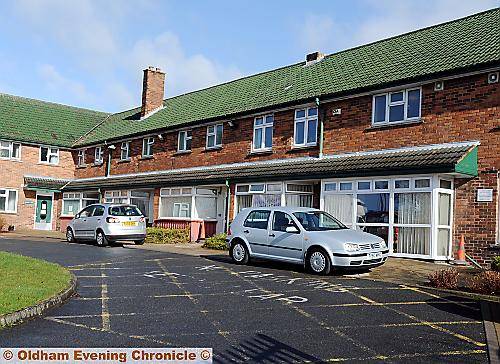Decision time for Limecroft
Date published: 06 June 2011

Limecroft Respite care centre
REOPENING Limecroft Care Home could land taxpayers with a £2 million refurbishment bill, council leaders will be warned tonight.
Oldham Council’s cabinet will decide on the future of the Limeside facility when it meets there at 6pm — the first away from the Civic Centre in a bid to engage with local communities.
The Whitebank Road home, which provided respite care and short-stay provision for older people, closed on March 31 due to council budget cuts under the previous Lib-Dem/Tory administration.
Labour has pledged to resurrect the 20-bed residential care unit.
But a report that will go before councillors lays out the costs, saying it will need a refurbishment that would cost £2 million, including adding en-suite bathrooms to rooms and possibly extending it to 40 beds. A complete rebuild will cost around £4 million.
The report recommends negotiating with Greater Manchester Local Authority “arms length” residential care providers to provide the service at Limeside for the next two years while plans for the development are drawn up and funding found.
Other councils, such as Tameside, Manchester and Stockport, run their residential care homes through such organisations. The report says they benefit from having better performance around sickness management and have good or excellent inspection ratings.
It’s considered the option likely to provide the best mix of quality and cost.
The report states: “Limecroft as presently constituted has poor long-term viability. It is too small to be competitive, as it takes almost as many staff as a 40-bed unit, consequently its unit costs will always be significantly higher than the average residential care home.
“Its lack of en-suite facilities will increasingly make it uncompetitive as it is unlikely that in future older people will be prepared to go into one-room, institutional type residential care with shared toilet and bathroom facilities.
“Without a commitment to the longer-term development there will always be a question mark over the future of Limecroft.”
But council leader Councillor Jim McMahon said the extension to double the amount of beds would pay for itself. As it would not require more staff, the cost per bed would be reduced.
He said: “It was closed because the cost per unit was higher than the private sector. It makes sense to add beds as it makes it more cost effective in the future. We would get the £2 million back over a period of five to 10 years.
“We will look at the option for expanding and refurbishment later as the most important thing is to get the facility reopened and give support to carers.”
An alternative would be to re-open the home on the previous model, which would take around six months to recruit and train staff and cost around £1 million a year to run.
It is the most expensive option with the cost of each bed running at £43,000 a year, which could become unaffordable in the future, compared with £14,000 in the private sector.
A third option is a partnership with an independent provider, but these would look for a subsidy of up to £300,000 on top of the standard fee. While it is the cheapest option it has the greatest risks around quality.
Consultation found that the majority of families wanted the “excellent” rated facility to remain open as they valued the quality of care provided.
Most Viewed News Stories
- 1Dynamic rescue team duo pledge to raise funds for brave Finn
- 2Oldham man caged after 150 wraps of crack cocaine were found during house search
- 3Police probe follows Chadderton pepper-spraying incident
- 4Council chopped down trees 10 months ago, but the cuttings still remain
- 5Oldham mayor presents Armed Forces Silver Award to VPS UK




